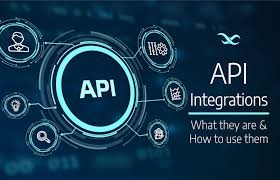Introduction
Data analysis is the process of transforming raw data into meaningful insights that inform decision-making and provide a deeper understanding of various phenomena. In this beginner-friendly article, we’ll walk you through the essential steps of the data analysis process, helping you grasp the fundamentals of how data is handled, cleaned, explored, and turned into actionable insights.
The Data Analysis Process
Step 1: Data Collection
The journey begins with data collection. Data can come from a variety of sources: surveys, databases, sensors, websites, and more. It’s important to ensure that the data collected is relevant to the questions you’re aiming to answer.
Step 2: Data Cleaning and Preprocessing
Raw data is rarely ready for analysis. It might contain errors, missing values, or inconsistencies. Data cleaning involves activities like removing duplicates, filling in missing values, and standardizing formats. This step ensures that your data is accurate and usable.
Step 3: Exploratory Data Analysis (EDA)
EDA involves exploring and summarizing the data using various techniques. Visualizations like histograms, scatter plots, and box plots help you understand the distribution of data, identify outliers, and uncover potential patterns or relationships.
Step 4: Feature Engineering
Feature engineering is the process of selecting and transforming variables (features) in your dataset to enhance the performance of your analysis. This could include creating new features or selecting the most relevant ones for your analysis.
Step 5: Statistical Analysis and Modeling
This step involves using statistical techniques to test hypotheses and answer questions. You might use techniques like regression analysis to understand relationships between variables or classification models to make predictions.
Step 6: Data Visualization
Visualizing data is crucial for communicating insights effectively. Bar charts, line graphs, heatmaps, and more help convey complex information in a digestible format. Visualization can reveal trends and patterns that might not be apparent from raw data.
Step 7: Interpretation and Insights
After performing analysis and generating visualizations, it’s time to interpret your findings. What do the patterns and relationships in the data suggest? Are there actionable insights that can drive decisions or further exploration?
Step 8: Reporting and Communication
The insights you’ve gained need to be shared with others. Clear and concise reporting is crucial. You might create presentations, reports, or dashboards that convey the results and recommendations to stakeholders.
Step 9: Iteration and Refinement
Data analysis is rarely a linear process. As you gain more insights, you might refine your analysis, ask new questions, or collect additional data to deepen your understanding.
Step 10: Conclusion and Decision-Making
The ultimate goal of data analysis is to inform decision-making. Armed with insights, organizations can make informed choices that lead to improved processes, better products, and enhanced outcomes.
Conclusion
The data analysis process is a systematic journey that transforms raw data into actionable insights. By following these steps, you’ll be able to uncover patterns, draw conclusions, and make informed decisions based on evidence rather than assumptions. As you dive deeper into data analysis, remember that practice and curiosity are your allies—don’t hesitate to explore, question, and refine your methods to extract the most value from your data.
Related posts:
- The Power of Digital Marketing for Business Growth: Strategies and Success Stories in Nigeria
- The Power of Digital Marketing for Business Growth: Strategies and Success Stories in Nigeria
- The Power of UI/UX Design in Web Development: Creating Engaging Interfaces
- Data Privacy and Security in the Digital Era: Safeguarding Sensitive Information

